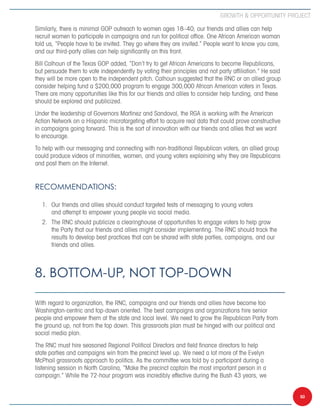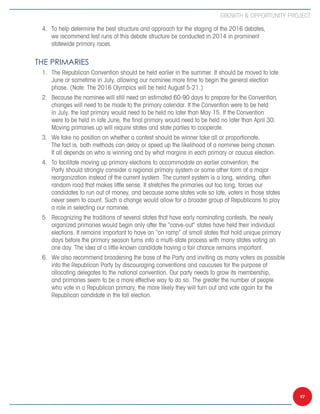The Growth & Opportunity Project report analyzes the Republican Party's performance in the 2012 election and makes recommendations for improving future campaigns. It conducted extensive research, including over 2,600 interviews, focus groups, surveys, and listening sessions. The report's key findings are that the Party's messaging is not connecting with various demographic groups, especially minorities, women and youth. It recommends updating messaging to emphasize compassion and economic opportunity for all. The future of the Party depends on adopting a more inclusive tone and developing policies that appeal to a diverse America.



































































































